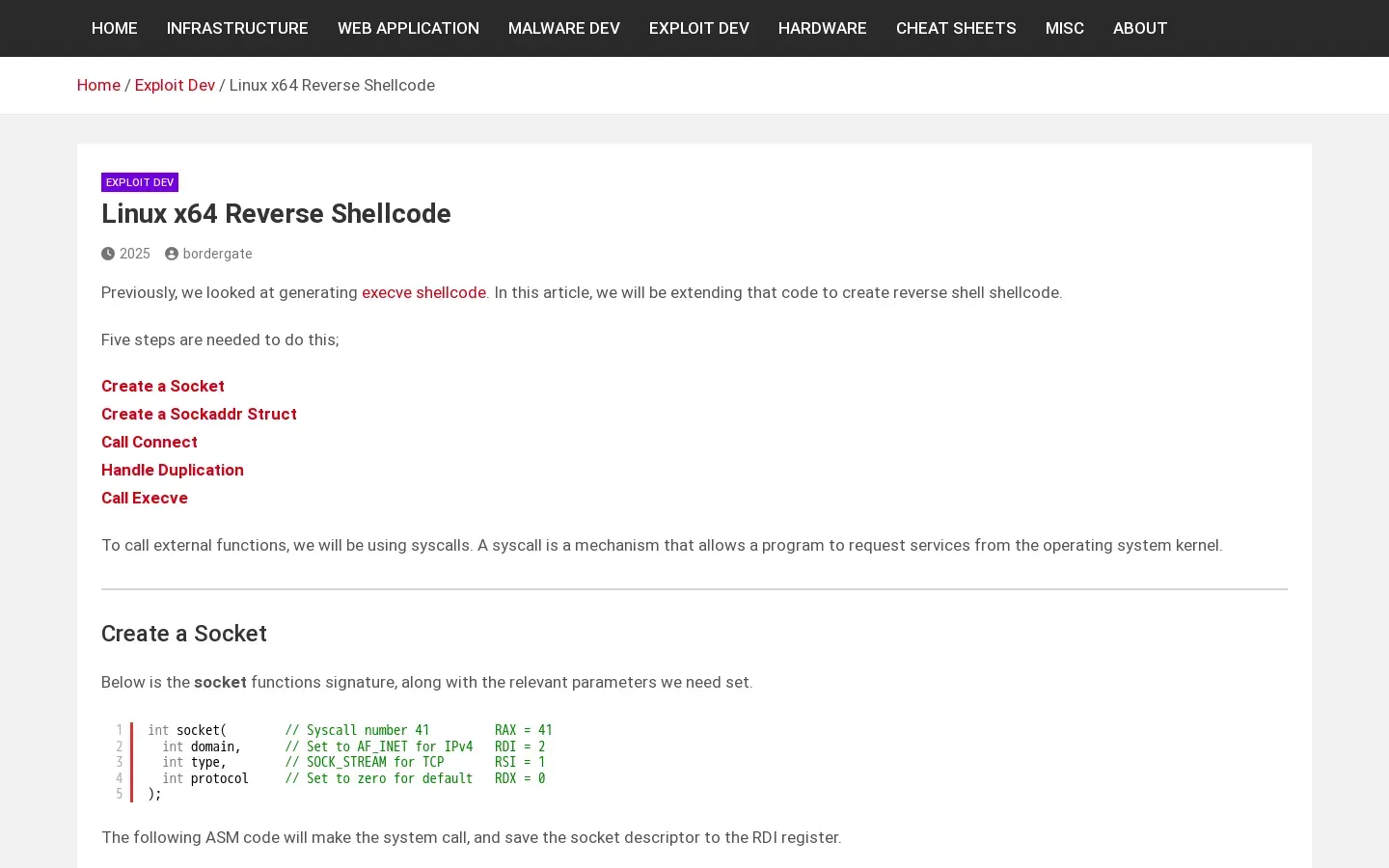Guide to Creating Linux Reverse Shell Shellcode
/ 1 min read
💻🔄 Guide to Creating Reverse Shell Shellcode in Linux. This article outlines a five-step process for generating reverse shell shellcode, which includes creating a socket, setting up a sockaddr struct, connecting to a target, duplicating file descriptors, and executing a shell. The process utilizes system calls to interact with the operating system kernel. Key code snippets are provided for each step, demonstrating how to implement socket creation, connection, and redirection of input/output over the network. Additionally, the article discusses modifications to ensure the shellcode is null-free and suggests further enhancements, such as dynamic IP and port generation. The final shellcode can be executed in a C environment after setting up a netcat listener.
